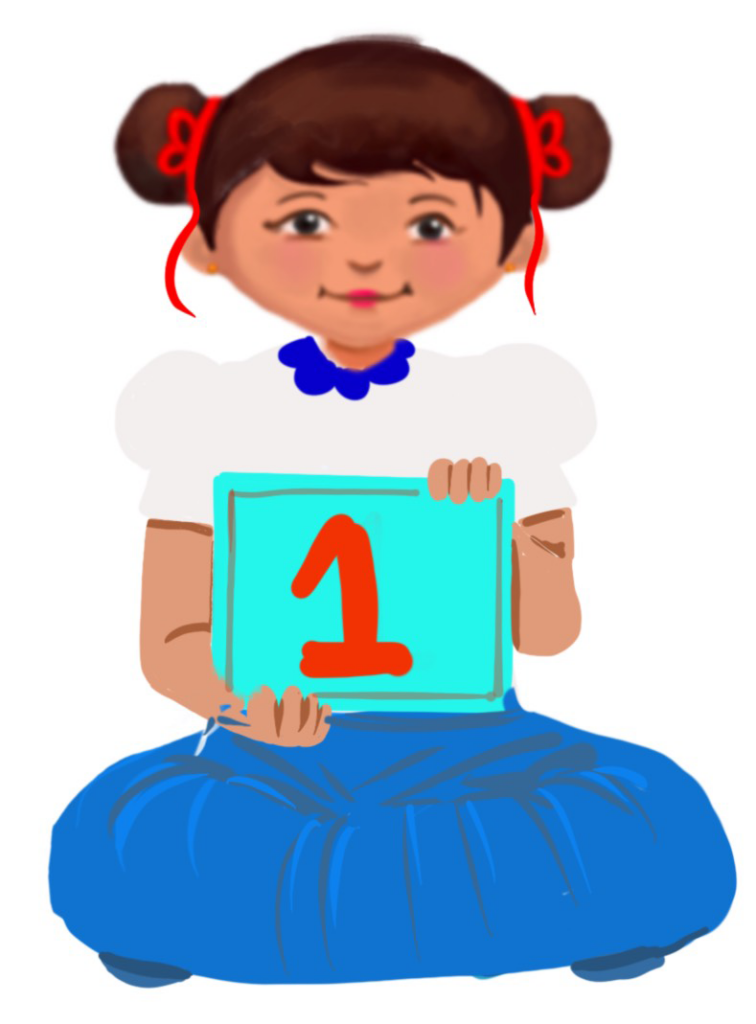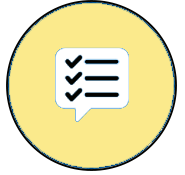
Operating the Computer Mouse
Class 1
 Objective
Objective
Students will be able to identify the different parts and functions of the computer mouse.
 Prerequisites
Prerequisites
| Here are some prerequisite skills to assess child readiness: 1. Tolerance to sit 2. Basic reading and writing skills 3. Ability to follow instructions 4. Good hand-eye coordination 5. Fine motor skills 6. Gross motor skills 7. Identification of letters 8. Identification of numbers 9. Concept – Up/Down, Right/Left |
Worksheet: Colour the Letters by Code
Enlarged Worksheet: Colour the Letters by Code
Worksheet: Left and Right Position
Enlarged Worksheet: Left and Right Position
Video: Letter Recognition
Instructions to the Teacher:
Prepare a sheet of paper with the 26 alphabets. You can use cubes with letters printed on them or you can prepare letter cards cutout from thick cardboard sheet. Write the letters on each cardboard sheet. The teacher has to call out the letter name and the child has to place the correct letter card on the corresponding letter on the sheet as shown in the video.
Worksheet: Recognising Letters
Enlarged Worksheet: Recognising Letters
 Goal
Goal
All
All children will be able to identify a computer mouse.
Some
Some children will be able to use the computer mouse buttons to perform actions.
Few
Few children can identify the parts of the computer mouse, its functions and use the mouse buttons to perform actions.
Operational Definition
All – This gives the goal, which is the minimum that the teacher must achieve for all students in the classroom.
Some – This gives the goal that the teacher may try to achieve for some students in the classroom who can achieve the suggested goal over and above the goal stated for ‘All’.
Few – This gives the goal that the teacher may try to achieve for few students in the classroom who can achieve the suggested goal over and above the goal stated for ‘Some’ and ‘All’.
Materials Required:
Technology
- An audio-enabled computer with an internet connection, smartboard projector and screen.
- All devices like laptops, tablets and desktop computers with accessibility features enabled.
- Screen readers like JAWS and NVDA.
- Large keyboards, built-in screen magnifiers, hearing aids, text-to-speech and speech-to-text software.
- Voice recognition software like Siri, Windows Speech Recognition, etc.
- Headsets.
- Student writing or typing tools.
Teacher Materials
- Whiteboard and markers or blackboard and chalk.
- Pre-teach vocabulary cards, sight words, communication cards and worksheets.
- Lesson videos.
Student Handouts
- Handout 1: Communication Cards
- Handout 2: Vocabulary Cards
- Handout 4: Trace and Learn Card
- Handout 5: Yes or No Cards
- Handout 6: Thumbs Up and Down Card
- Handout 7: Worksheets
Print Preparation
The teacher will print, copy or laminate (wherever applicable):
- Communication Cards for students
- Trace and Learn Cards for students
- Vocabulary Cards for students
- Thumbs up and Thumbs down Card for students
- Yes or No Cards for students
- Pre-teach vocabulary cards, sight word cards
- Worksheets for students
Preparation for the Activity:
- All the learning and teaching materials needed for this lesson plan must be ready before the lesson begins.
- Ensure that there are enough copies for all children. Multiple copies can be made by photocopying too.
- Please have the assistive technologies and accessibility features ready for your inclusive classroom.
Setup for transacting the lesson:
This topic must be taught in the classroom or a computer lab.
Instructions to the teacher:
- Begin the topic with a pre-assessment worksheet and pre-teach the vocabulary.
- Introduce the concept of the computer mouse using a flashcard and show the real computer mouse.
- Explain what is meant by the computer mouse, the buttons and the types of clicks.
- Teach the children the difference between left and right clicks.
- Tell them the computer mouse can be of different types. A computer mouse can be wired and wireless.
- Ask the students to identify the wired and the wireless mouse.
- Explain to the students how to hold a computer mouse, its operation and its uses.
1. Expected Prior Knowledge
Awareness of the extent of student’s prior knowledge of the topic will help the teacher plan and deliver the lesson appropriately.
This could be assessed through the provided Pre-assessment worksheet.
Worksheets, Vocabulary words
Worksheet: Pre-Assessment
Enlarged Worksheet: Pre-Assessment
Worksheet: Word-to-Word Matching
Enlarged Worksheet: Word-to-Word Matching
Worksheet: Word-to-Picture Matching
Enlarged Worksheet: Word-to-Picture Matching
LTM: Pre-teach Vocabulary
LTM: Sight Words
2. Warm-Up
1. Write the word ‘mouse’ on the board. Ask students to write down the first thing that comes to mind when thinking of the word ‘mouse’.
Possible Answers: Animal mouse, computer mouse, rat
2. The computer mouse is used to …
Possible Answers: scroll, drag-drop, colour pictures, draw, select an item, play games, to make the page big or small etc.
Differentiation
- Students can write down answers in their notebooks or on a slip of paper and stick it on the corkboard.
- Students can choose to write their answers or communicate their responses verbally with a friend/teacher.
- Students can draw the word or point to the picture on the Communication Card (a Communication Card handout should be provided).
- The teacher should immediately praise the student with her/his name and reward the child.
Worksheets, LTM and Communication Cards:
Worksheet: Vocabulary
Enlarged Worksheet: Vocabulary
Worksheet: Trace and Learn
Enlarged Worksheet: Trace and Learn
LTM: Thumbs Up and Down
LTM: Communication Card
LTM: Yes or No Cards
3. My Five Fingers
The children should know the names of the five fingers before being taught to use the computer mouse. The teacher could use her fingers and tell the names of each finger. The teacher could also use the printable and teach them the finger names.
Poster
Enlarged Poster: Five Fingers
Poster: Five Fingers
Enlarged Poster: Parts of a Computer Mouse
Poster: Parts of the Computer Mouse
4. Computer Mouse
Guided watching
Bring the attention of the students to the screen and say, “Let’s watch this video.”
Ask students to give a ‘thumbs up’ whenever they hear or see the word ‘mouse’ in the video.
Play video
A mouse is an oval-shaped computer tool.
The computer mouse has three parts: Two buttons and one wheel.
1. Left-button
2. Right-button
3. Scroll wheel
The left-button is pressed using the index finger.
The right-button is pressed using the middle finger.
Clicking
-Pressing buttons on a mouse is called clicking.
Left-click and right-click
-Pressing the left-button is called left-click.
-Pressing the right-button is called right-click.
Scroll wheel
-It is used to move up or down the page or the window.
Mouse pad
– A mouse pad is a soft pad to place the mouse.
Video: Features of the Computer Mouse
Video: Features of the Computer Mouse with ISL
Video: Handling a Computer Mouse
Video: Handling a Computer Mouse with ISL
Video: Computer Mouse (Real demo)
Video: Computer Mouse (Real demo) with ISL
Informal Assessment (After playing videos)
1. Ask, “What is a computer mouse?”
If needed, prompt the children to come up with a definition using language from the video.
Example: A mouse is an oval-shaped computer tool.
Write the term and definition on the board after the students respond.
2. Ask, “Does the computer mouse look like the animal mouse?” (The answer is yes)
3. Ask, “Does the computer mouse have two buttons and a scroll wheel?”(The answer is yes)
4. Ask, “Can we press the left-button with the middle finger?” (The answer is yes)
5. Ask, “Do we use the scroll wheel to move the page up and down?” (The answer is no)
6. Ask, “Do we place the computer mouse on a mousepad?” (The answer is yes)
Differentiation
Verbal response
Verbal response or hold up Yes or No card
Hold up or point to Yes or No card
Worksheet: Informal Assessment
5. Join the Dots and Colour
Worksheet: Join and Colour – Computer Mouse
Enlarged Worksheet: Join and Colour – Computer Mouse
6. Computer Mouse Song
I have no whiskers
I don’t have a tail
I have no ears
And I don’t have a face.
I have a right-button
I have a left-button
And I have a scroll wheel
Which helps go up and down.
Click, Click, Click
Is the sound I make
Yes, I’m a computer mouse
In every other house.
Song: Computer Mouse Song
Song: Computer Mouse Song with ISL
7. Colour the Computer Mouse
Worksheet: Colour the Computer Mouse
Enlarged Worksheet: Colour the Computer Mouse
8. Adaptations and Modifications
Adaptations and Modifications: Computer Mouse
9. Assessment
Adaptations for addressing learner variability:
The worksheets are of different types to cater to other learning variabilities.
1. Verbal and written directions have been given in the worksheet assignments.
2. Video with audio is provided so students can replay them when necessary.
3. Students can express their answers orally to their peer buddy if they face writing difficulties.
4. Students can also drill aloud to themselves or other students.
5. Screen Enlarger.
6. Screen reader for the visually impaired.
7. Slant boards for students with motor challenges.
8. Pencil grips must also be provided to those who need it.
9. Avaz app or any other AAC app or AAC device could also be provided, or children who have communication difficulties can respond by gestures, eye pointing, or response cards.
10. Audio recorder.
Suggested variation in pace:
Students could take a few extra minutes to complete the worksheets.
Suggested variation in perceived challenge:
1. Children could also record their responses or answers or use response cards to convey the answers to their peers.
2. They may also be allowed to dictate their responses (especially students with visual disabilities).
3. Students may also be given additional time to complete the worksheet.
4. Students could take the assessments using the Wordwall.
Suggested scaffolds for assistance and practice:
– Teachers could help the students while reading the words.
– Teachers could activate the students’ prior background knowledge by playing the video again.
– Teachers could break the task into smaller, more manageable parts. Students could also express themselves using gestures or visual aids.
– Children who can draw a mouse could be allowed to draw, and the rest must colour the picture.
Worksheet: Label the Parts of the Computer Mouse
Enlarged Worksheet: Label the Parts of the Computer Mouse
Try Me: Operating the Mouse
Wordwall: Label the Parts of the Computer Mouse
Worksheet: Computer Mouse- Yes or No Questions
Enlarged Worksheet: Computer Mouse- Yes or No Questions
Wordwall: Computer Mouse-Yes or No Questions
8. Assistive Technologies and Adaptive Devices
Assistive Technologies and Adaptive Devices
Teacher Resource Document
| Source and Attribution of images: All images used in the above Assets and Aids are originally created. |
| This digital material has been developed by the Sri Sathya Sai Vidya Vahini Inclusive Education Project, a unit of Sri Sathya Sai Central Trust, Prasanthi Nilayam, as a collaborative offering in the service of our nation. |